Is Insulation Worth It?
- Generally, insulation is low maintenance and lasts a long time
- An uninsulated roof can account for a quarter of heat loss in your home
- If you are on a low income and want to have your home insulated, there is financial assistance
Energy bills are so volatile, but one of the ways you can help reduce your bills is by having your house suitably insulated. An uninsulated roof can account for a quarter of heat loss in your home.
Insulation is definitely worth it as the cost of installation is low when compared to the amount you could be saving in the long term. It’s not only good for the home; it’s great for your finances.
Looking to insulate your home? Why not fill in our quote comparison tool? It only takes a minute and gives you prices tailored to you.
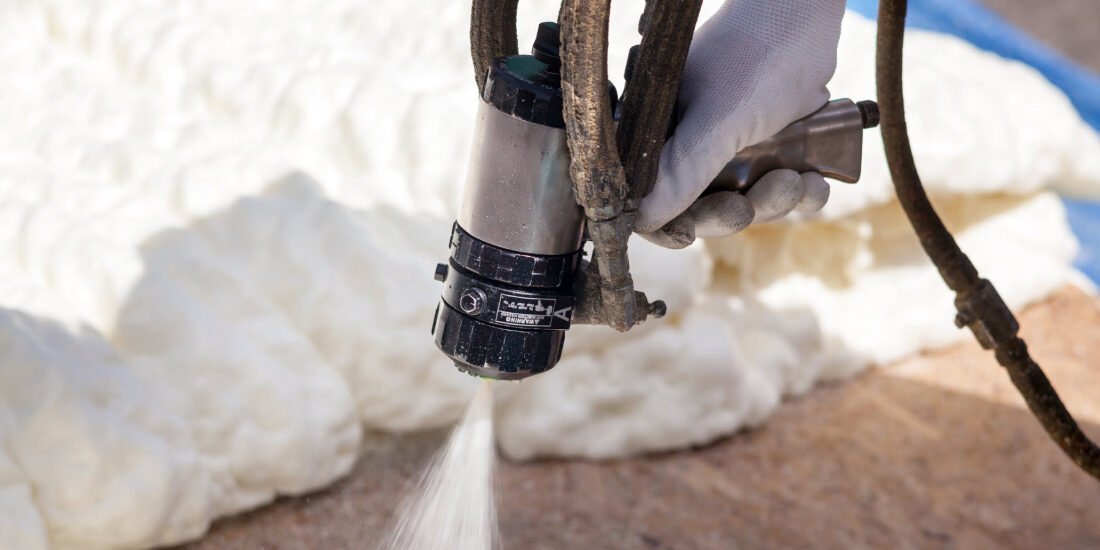
What's On This Page?
Click the links below and head straight to a specific section of the article.
What Is Loft Insulation?
Loft insulation is a material that acts like a barrier in your roof which then traps heat. It can be laid between the horizontal beams along the floor of your loft (known as joists) or the angled beams supporting the roof (rafters).
Factors To Consider When Insulating a Loft
Storage space
Damp
Warmth
Rooms
Ventilation
Accessibility
Flat roofs
Storage Space
If you plan on using the loft for storage space, you will want to lay boards across the joists. Unfortunately, if you only insulate between the joists before laying down the boards, this won’t be enough.
To ensure you get enough insulation, you can raise the level of the floor to fit enough mineral wool beneath. In order to do this, you can lay timber battens across the joists, or you can fit purpose-built plastic feet on the joists to support the new floor.
Leaving a ventilated air gap between the material and the boards is important because it prevents condensation on the underside of the boards. Avoid squashing the mineral wool when fitting the boards on top, as this will decrease the insulation’s effectiveness.
Damp
By insulating your roof, you will prevent heat from escaping from your living space and make your loft considerably colder. This could potentially increase any existing damp or condensation issues, so if you are installing insulation yourself, please bear in mind that you may need to increase ventilation to avoid this.
Before doing anything, it is worth seeking professional advice first to see if you can fix any existing issues concerning damp or condensation.
Warmth
There is an alternative way to insulate your loft using rigid boards, scaled to size and placed between and over the rafters. Alternatively, you can use foam sprayed between the rafters.
Whichever method you use, this is not a DIY job and would require a specialist to insulate your roof. Here are some pros and cons:
Pros:
The loft will be warmer than if you used standard joist insulation, so you wouldn’t need to worry about pipes freezing
You can lay boards down on the floor to create storage without having to raise for ventilation
Cons:
Insulating rafters are considerably more expensive than insulating between joists
As well as insulating the roof, you would have to insulate any surrounding areas such as: gable walls, party walls and any chimneys in the loft space. Leaving these uninsulated will allow the heat to bypass your new insulation making it ineffective
Rooms
If you want to convert your loft into a room, or it’s already being used as a living space, then you need to ensure that all the walls and ceilings between heated and unheated rooms are insulated.
Sloping ceilings can be insulated in the same way as using rigid boards on the rafters but with an added layer of plasterboard on the inside. Vertical walls can be insulated the same way.
Flat ceilings can be insulated like a standard loft by laying boards across the joists. Make sure to insulate the wall and ceiling around any dormer windows and use high performance or double glazing for any windows or skylights.
Similar to rafter insulation, this isn’t a DIY job and would require a specialist to ensure it is professionally done and that proper ventilation is provided where needed.
Ventilation
A house needs a steady amount of air flow so it stays fresh, dry and looking healthy. A professional installer will make sure not to block or seal any intentional ventilation. If you are doing DIY, make sure that you don’t cover any vents, grilles or airbricks.
Accessibility
If it’s difficult to access your loft, you can have what’s called blown insulation installed by a professional. They will use specialist equipment to blow insulating materials, such as mineral wool fibre or polyurethane foam, into any difficult spaces.
Flat Roofs
Flat roofs should preferably be insulated from above. A rigid board can be added on top of the roof’s weatherproof layer or placed directly on top of the roof surface, with a new weatherproof layer added on top of the insulation.
The best time to install is when the roof covering needs replacing, as it’s now a requirement for flat roofs to be insulated to comply with building regulations.
Although it is possible to insulate a flat roof from underneath, it can lead to condensation issues if handled incorrectly.
Installing a flat roof could save you a similar amount on your heating bills other loft insulating materials, but will vary depending on how much of the house has a flat roof. For more information on how much roof insulation costs, see our guide.
Benefits of Loft Insulation
1. Preventing Heat Loss
Around a quarter of heat is lost through the roof of an uninsulated home.
The whole purpose of insulating your loft is to reduce the heat loss by creating a thermal barrier and preventing the heat from rising and dispersing through your roof.
Just by installing this barrier, you can expect a 25% reduction in heat loss. This ensures your home will be warmer in the winter, and cooler in the summer.
2. Saving on Bills
Insulating a loft can help you regularly save hundreds each year on your energy bills.
And with loft insulation being durable and able to last over 40 years, it will pay for itself many times over.
Plus there’s the possibility of getting a grant that can significantly reduce the cost of installing loft insulation.
3. More Environmentally Friendly
Not only do you benefit financially, the perks of cutting down on your energy use is also the reduction of your carbon footprint. Having insulating materials will make your home much more environmentally friendly.
4. Noise Reduction
As well as retaining heat, insulation can help shield you from noise pollution and reduce the amount of noise that makes it into your home.
Once your loft is properly insulated, you should be able to notice a reduction in noise outside, especially the upper floor of your house.
5. Increase Home Value
There’s a big chance spray foam could increase the value of your home. This is because properly insulated homes tend to be more in-demand. Over half of all property purchasers now consider energy-efficient as important when they’re looking for a new home or business premises.
If you don’t have any insulation, or if your home is poorly-insulated, you could be paying much more for your fuel bills than you need to. It’s said that uninsulated homes lose around 40% of heat during the winter months. This causes your HVAC systems to work harder, which in turn leads to a rise in energy bills.
How Much Does Loft Insulation Cost?
Costs for insulating a loft will vary depending on which materials you use and whether you install it yourself or hire a professional.
If you are thinking of doing it yourself, then you need to be mindful that not all the different materials will be available to you as some do require installation by a professional.
Other factors, such as the amount you need, will also influence the price you'll pay.
If your loft already has some insulation, then it might just need an extra layer to reach the recommended depth.
However, if your existing setup is quite old, in poor condition or badly fitted then it may need to be removed. This will include additional removal costs on top of installing the material needed for the project.
Another factor that could affect the cost is how accessible the loft is. If it’s difficult to get to, you'll end up paying more.
According to Checkatrade, the average cost of loft insulation is £400-600. Depending on the property type, the materials can cost you more, but labour costs will average around £250 a day. You can see typical costs based on two property types in the interactive graph below.
Insulation Grants
Some energy suppliers offer free loft and cavity wall insulation under The Energy Company Obligation (ECO) scheme.
ECO provides grants for energy efficiency measures, such as help with insulating cavity walls and lofts.
Rather than through the government, the ECO grants are provided by energy suppliers, where larger companies are obligated to help homes make energy-saving improvements.
They're mainly targeted at households with low-income and those in vulnerable situations. However, the criteria for ECO can be quite complex.
And if you receive particular benefits, you could be eligible for an insulating grant, or for a new boiler.
Insulating Using Spray Foam
For homes with lofts in the UK, spray foam is arguably the best way to insulate your home.
Spray foam is a great alternative to fibreglass or mineral wool and will enable you to completely seal your room, preventing any heat loss.
Unlike fibreglass or cellulose, which need to be layered to achieve the maximum depth, spray foam doesn't require much space.
When applied between the joists, it will expand by 100x and fill any gap or corner, completely sealing the room and creating an air-tight layer.
By creating an air-tight seal, spray foam can lower your bills by up to 50%, as well as prevent heat loss and keep your home cool in summer.
Compared to other forms of insulation, few seem to match spray foam's efficiency, plus it also comes with a 25-year manufacturer’s warranty and is approved by Energy Saving Trust.
Summary
So if you have the budget or are eligible for a grant then insulation is absolutely worth investing in.
It will not only warm your home in the winter, but keep it cool in the summer. Plus other benefits include the increasing of your home’s value along with lowering your heating bills and improving your home’s energy efficiency rating.
If you'd like to compare spray insulation costs, all you need to do is fill in a few details and we can take care of the rest.
Related articles
View all Insulation articles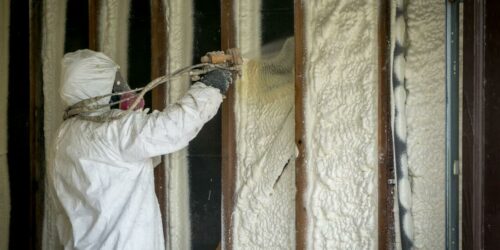
How Long Does Spray Foam Insulation Last?
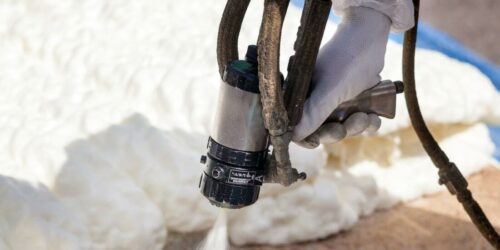
Can I Install DIY Spray Foam Insulation Myself?
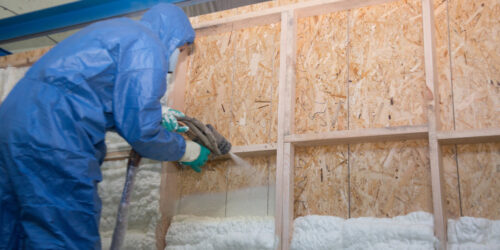
Six Benefits of Spray Foam Insulation
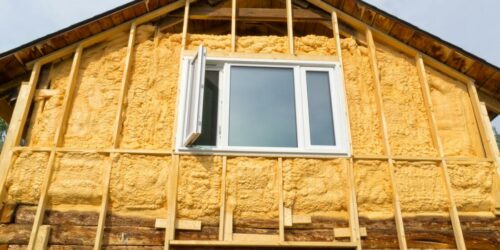
Is My Property Suitable for Spray-On Insulation Foam?

Why Consider Spray Foam Insulation in Roofs?
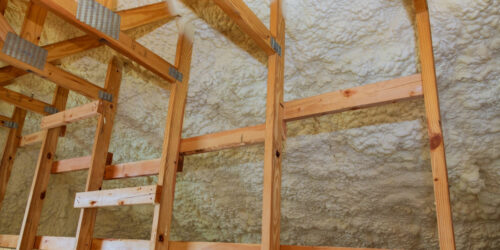
Icynene Spray Foam Insulation: A Complete Guide
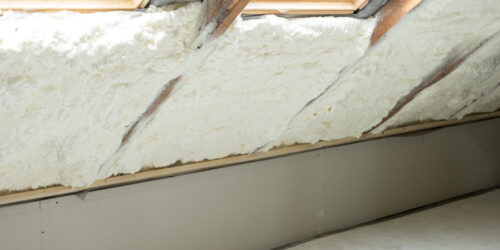
Spray Foam Insulation Installers: What to Expect







